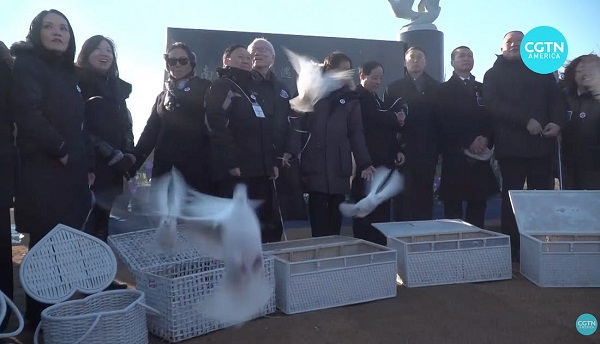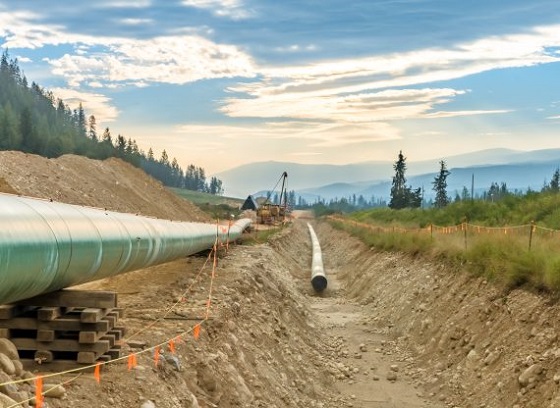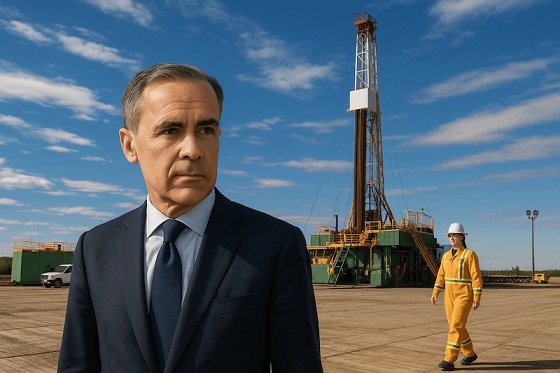Gerry Feehan
“India? Are you nuts?” Join Gerry for Part 1 of his series on India.

This is the first in a four-part series on India
“India. Are you nuts?” an incredulous friend remarked. “Why would you want to go there? It’s dirty, crowded, smelly and full of stray cows.”
So, I was anxious as I stared out the window of the Dreamliner 787 on descent into New Delhi after a 14-hour flight from Vancouver. But Delhi was nowhere to be seen. The worst smog in the country’s history had enveloped India’s capital. Visibility was near zero.

Smog in India
The late-night ride to the hotel was a dystopian dream. With the twelve-hour time change we were in a trance-like state. The streets were eerily quiet. An acrid smell hung in the air. As we drove through dense smog, the moon made a futile effort to silhouette India Gate, Parliament House and the Prime Minister’s residence.
“What’s happening?” we asked the clerk at check-in.
“Diwali,“ he smiled.
Diwali is an ancient Hindu festival that pays tribute to the victory of light over dark, good over evil – and a highlight of the annual celebration is the setting off of fireworks. When Delhi’s 22,000,000 inhabitants simultaneously ignite firecrackers and other pyrotechnics, the sub-tropical air becomes thick with the stagnant refuse of gunpowder. Add to this the exhaust of 9 million vehicles, smoke from burnt stubble fields in nearby Punjab, plus a temperature inversion – and you have unimaginable, eye-searing air pollution.
“…At the top of the heap are India’s cows. Bovines stand nonchalant, impervious – and sacred – amongst the vehicular pandemonium…”
Schools were closed. Construction was halted. Roads were sprayed to keep dust down. Farmers were threatened with fines for illegally burning rice stubble; all to no avail. The particulate index climbed, from just over 600 when we arrived, to 964 three days later. This level is 15 times the “safe” limit in India – and 60 times what would be considered hazardous in Canada.

Street Vendors during Diwali
Then the currency crisis hit. In an effort to weed out “black money” – cash hoarded through corruption and counterfeiting – Prime Minister Narendra Modi announced the demonetization of all 500 and 1000 rupee bills. That’s like cancelling all our $10 and $20 bills.
India’s 1.3 billion people were given a fortnight to exchange old rupees, after which the old bills would become worthless. The bank lineups were horrifying.
India’s is a cash economy and many people don’t even use banks. The country was in chaos. But surprisingly, most people we met – guides, drivers, shopkeepers, restaurant employees – were sick of the endemic corruption and in favour of this Draconian strategy.
Our tour group consisted of my wife Florence and me, together with our fun-loving travel-mates Kim and Simone from Victoria and Joe and Carla from Saskatoon. We struggled through these pollution and currency crises from the comfort of an air-filtered, credit card-accepting hotel. Meanwhile out on the streets the locals coughed, lined up and resolutely carried on life in 21st century India.

Air quality is an issue
But for me more astonishing and unfathomable than the choking smog and worthless bills was India’s overwhelming, perpetual traffic congestion.
The “sub-continent” has 54 cities with more than a million people. Four of these urban agglomerations have over 20 million souls. And even the smallest Indian village is a clogged spoke of trucks, buses, cars, motorcycles, rickshaws, bicycles and foot traffic. Pecking order is determined by size. Bicycles give way to motorcycles, which give way to rickshaws… ascending up to the big Tata transport trucks.

Traffic is insane
Buses overflow with humanity – arms, legs and heads spilling from every door and window. A moped transports an entire family – and their belongings. The lowly pedestrian occupies the bottom of the traffic heap, flirting death with each wary footstep.
At the top of the heap are India’s cows. Bovines stand nonchalant, impervious – and sacred – amongst the vehicular pandemonium.

Cows rule.
This may come as a somewhat of a surprise but Indians are fantastic drivers. In what can only be termed functional chaos, traffic actually moves. Roads designed for two lanes harbour four – in each direction. The tiniest opening in traffic is immediately filled by the largest object that fits that space. India abhors a vacuum.
Horns blast non-stop in a cacophonous chorus, used not in anger but to convey a message. A little beep means, “Hey, I’m here.” A resolute honk indicates, “I’m filling that gap.” And an extended blast from a bus states unequivocally, “Coming through, out of my way.”
The first two weeks of our month-long stay in India were spent in the company – and under the watchful eye – of guide Anoop Singhal and driver Devinder Singh. Each morning Singh Ji, a soft-spoken Sikh, greeted us with a colourful turban and a contagious smile. (“Ji” is an honorific, used to show respect – and we happily started referring to one another as Kim Ji, Anoop Ji, etc.)

Despite the culinary curry shock to my digestive system – and the occasional experiment with street food – I managed to avoid “Delhi belly.” I credit my intestinal well-being to a daily dose of local yoghurt. But even with the use of air masks, we all eventually succumbed to the dreaded Delhi cough.

The Lake Palace of Udaipur
After “seeing” the capital, we travelled a few hundred kilometers southwest to Udaipur to begin an exploration of the fabulous architecture of Rajasthan. Vast palaces built by fabulously wealthy Maharajas in the 17th century still dominate the landscape. The Lake Palace of Udaipur, the White City, is a stunning snow-white jewel set in a liquid surface.
In Jodhpur, the Blue City, we looked down on a jumble of turquoise buildings from the heights of Mehrangarh Fort. The last in the colourful triumvirate of Rajasthan’s famous towns is Jaipur, the Pink City, where in 1857 Maharaja Ram Singh ordered his palace painted pink to impress the British overlords.

India is a photographer’s paradise. No need to search out photo ops; simply plunk down on any curb and start snapping: a vendor hawking fruit, women in crimson saris haggling over spices, a cow imperially chewing its cud, children laughing, beggars begging. All day, every day the flavour, colour, texture, sound, energy and urgency of India unfolds spontaneously, unrehearsed.
On the last day of our stay in Rajasthan, we stopped in at the famed camel festival of Pushkar where local dromedaries are auctioned annually. I nearly closed on a fine one-humped specimen but was outbid by a clever camel herder from the Punjab. Just as well; probably would have been tough to squeeze a grumpy dromedary into my suitcase.

Next time: Taj Mahal and the Sacred Ganges.
Thank you to these great local sponsors who make these stories possible!
If you go: Explore India from Vancouver B.C., www.exploreindia.ca, capably and professionally handled all aspects of our private month-long tour – air and land travel, hotels, meals, guides, drivers, entrance fees and activities – for one all-inclusive price.

Click below to read about some of Gerry’s other great travel adventures.
India Part 2- Terrific photos! Experience the Taj Mahal and Ganges with Gerry Feehan
Gerry Feehan
Abu Simbel

Abu Simbel is a marvel of ancient and modern engineering
I love looking out the window of an airplane at the earth far below, seeing where coast meets water or observing the eroded remains of some ancient formation in the changing light. Alas, the grimy desert sand hadn’t been cleaned from the windows of our EgyptAir jet, so we couldn’t see a thing as we flew over Lake Nasser en route to Abu Simbel. I was hopeful that this lack of attention to detail would not extend to other minor maintenance items, such as ensuring the cabin was pressurized or the fuel tank full.
We had just spent a week on a dahabiya sailboat cruising the Nile River, and after disembarking at Aswan, were headed further south to see one of Egypt’s great
monuments. There are a couple of ways to get to Abu Simbel from Aswan. You can ride a bus for 4 hours through the scorched Sahara Desert, or you can take a plane for the short 45-minute flight.
Opaque windows notwithstanding, I was glad we had chosen travel by air. Abu Simbel is spectacular, but there’s really not much to see except the monument itself and a small adjacent museum. So most tourists, us included, make the return trip in a day. And fortunately we had Sayed Mansour, an Egyptologist, on board. Sayed was there to explain all and clear our pained expressions.
Although it was early November, the intense Nubian sun was almost directly overhead, so Sayed led us to a quiet, shady spot where he began our introduction to
Egyptian history. Abu Simbel is a marvel of engineering — both modern and ancient. The temples were constructed during the reign of Ramses II. Carved from solid rock in a sandstone cliff overlooking the mighty river, these massive twin temples stood sentinel at a menacing bend in the Nile — and served as an intimidating obstacle to would-be invaders — for over 3000 years. But eventually Abu Simbel fell into disuse and succumbed to the inevitable, unrelenting Sahara. The site was nearly swallowed by sand when it was “rediscovered” by European adventurers in the early 19 th century. After years of excavation and restoration, the monuments resumed their original glory.
Then, in the 1960’s, Egyptian president Abdel Nasser decided to construct a new “High Dam” at Aswan. Doing so would create the largest man-made lake in the
world, 5250 sq km of backed-up Nile River. This ambitious project would bring economic benefit to parched Egypt, control the unpredictable annual Nile flood and also supply hydroelectric power to a poor, under-developed country. With the dam, the lights would go on in most Egyptian villages for the first time. But there were also a couple of drawbacks, which were conveniently swept under the water carpet by the government. The new reservoir would displace the local Nubian population whose forbearers had farmed the fertile banks of the Nile River for millennia. And many of Egypt’s greatest monuments and tombs would be forever submerged beneath the deep new basin — Abu Simbel included. But the government proceeded with the dam, monuments be damned.
Only after the water began to rise did an international team of archaeologists, scientists — and an army of labourers — begin the process of preserving these
colossal wonders. In an urgent race against the rising tide, the temples of Abu Simbel were surgically sliced into gigantic pieces, transported up the bank to safety and reassembled. The process was remarkable, a feat of engineering genius. And today the twin edifices, honouring Ramses and his wife Nefertari remain, gigantic, imperious and intact. But instead of overlooking a daunting corner of the Nile, this UNESCO World Heritage site now stands guard over a vast shimmering lake.
Sayed led us into the courtyard from our shady refuge and pointed to the four giant Colossi that decorate the exterior façade of the main temple. These statues of
Ramses were sculpted directly from Nile bedrock and sat stonily observing the river for 33 centuries. It was brutally hot under the direct sun. I was grateful for the new hat I had just acquired from a gullible street merchant. Poor fellow didn’t know what hit him. He started out demanding $40, but after a prolonged and brilliant negotiating session, I closed the deal for a trifling $36. It was difficult to hold back a grin as I sauntered away sporting my new fedora — although the thing did fall apart a couple of days later.
Sayed walked us toward the sacred heart of the shrine and lowered his voice. Like all Egyptians, Sayed’s native tongue is Arabic. But, oddly, his otherwise perfect English betrayed a slight cockney accent. (Sayed later disclosed that he had spent a couple of years working in an East London parts factory.) He showed us how the great hypostyle hall of the temple’s interior is supported by eight enormous pillars honouring Osiris, god of the underworld.

Exploring the inner temple

Nefertari
Sayed then left us to our devices. There were no other tourists. We had this incredible place to ourselves. In the dim light, we scampered amongst the sculptures
and sarcophagi, wandering, hiding and giggling as we explored the interior and its side chambers. At the far end lay the “the holiest of holies” a room whose walls were adorned with ornate carvings honouring the great Pharaoh’s victories — and offering tribute to the gods that made Ramses’ triumphs possible.
Exterior photographs of Abu Simbel are permitted, but pictures from within the sanctuary are verboten — a rule strictly enforced by the vigilant temple guardians — unless you offer a little baksheesh… in which case you can snap away to your heart’s content. Palms suitably greased, the caretakers are happy to pose with you in front of a hidden hieroglyph or a forbidden frieze, notwithstanding the stern glare of Ramses looking down from above.

A little baksheesh is key to holding the key
After our brief few hours at Abu Simbel, we hopped back on the plane. The panes weren’t any clearer but, acknowledging that there really wasn’t much to see in the Sahara — and that dirty airplane windows are not really a bona fide safety concern — I took time on the short flight to relax and bone up on Ramses the Great, whose mummified body awaited us at the Egyptian Museum in Cairo.
Exodus Travel skilfully handled every detail of our Egypt adventure: www.exodustravels.com/
Gerry Feehan is an award-winning travel writer and photographer. He lives in Kimberley, BC.

Thanks to Kennedy Wealth Management for sponsoring this series. Click on the ads and learn more about this long-term local business.
Gerry Feehan
Cairo – Al-Qahirah

The Pyramids of Giza
The first thing one notices upon arrival in Egypt is the intense level of security. I was screened once, scanned twice and patted down thrice between the time we landed at the airport and when we finally stepped out into the muggy Cairo evening. At our hotel the scrutiny continued with one last investigation of our luggage in the lobby. Although Egyptian security is abundant in quantity, the quality is questionable. The airport x-ray fellow, examining the egg shaker in my ukulele case, sternly demanded, “This, this, open this.” When I innocently shook the little plastic thing to demonstrate its impermeability he recoiled in horror, but then observed it with fascination and called over his supervisor. Thus began an animated, impromptu percussion session. As for the ukulele, it was confiscated at hotel check-in and imprisoned in the coat check for the duration of our Cairo stay. The reasons proffered for the seizure of this innocuous little instrument ranged from “safety purposes” to “forbidden entertainment”. When, after a very long day, we finally collapsed exhausted into bed, I was shaken — but did not stir.
Al-Qahirah has 20 million inhabitants, all squeezed into a thin green strip along the Nile River. Fading infrastructure and an exponential growth in vehicles have contributed to its well-deserved reputation as one of the world’s most traffic-congested cities. The 20km trip from our hotel in the city center, to the Great Pyramid of Cheops at Giza across the river, took nearly two hours. The driver smiled, “Very good, not rush hour.”
Our entrance fee for the Giza site was prepaid but we elected to fork out the extra Egyptian pounds to gain access to the interior of the Great Pyramid. Despite the up-charge — and the narrow, dark, claustrophobic climb – the reward, standing in Cheop’s eternal resting place, a crypt hidden deep inside the pyramid, was well worth it. We also chose to stay after sunset, dine al fresco in the warm Egyptian evening, and watch the celebrated ‘sound and light’ performance. The show was good. The food was marginal. Our waiter’s name was Fahid. Like many devout Muslim men, he sported a zabiba, or prayer bump, a callus developed on the forehead from years of prostration. Unfortunately throughout the event Fahid hovered over us, attentive to the point of irritation, blocking our view of the spectacle while constantly snapping fingers at his nervous underlings. The ‘son et lumière’ show was a little corny, but it’s pretty cool to see a trio of 4500-year-old pyramids – and the adjoining Great Sphinx — illuminated by 21 st century technology.

The Great Sphinx

Giza at nightThe next night our group of six Canucks attended an Egyptian cooking class. Our ebullient hostess was Anhar, (‘the River’ in Arabic). Encouraged by her contagious enthusiasm, we whipped up a nice tabouli salad, spicy chicken orzo soup and eggplant moussaka. We finished up with homemade baklava. Throughout the evening, Anhar quizzed us about the ingredients, the herbs and spices, their origins and proper method of preparation. Anyone who answered correctly was rewarded with her approving nod and a polite clap. Soon a contest ensued. Incorrect answers resulted in a loud communal ‘bzzzt’ — like the sound ending a hockey game. It’s not polite to blow one’s own horn, but the Feehan contingent acquitted themselves quite nicely. If I still had her email, Anhar could confirm this.
Cairo was not the highlight of our three-week Egyptian holiday, but a visit to the capital is mandatory. First there’s the incredible Pyramids. But as well there’s the Egyptian Museum that houses the world’s largest collection of Pharaonic antiquities including the golden finery of King Tutankhamen and the mummified remains of Ramses the Great. Ramses’ hair is rust coloured and thinning a little, but overall he looks pretty good for a guy entering his 34 th century.

Ramses the Great

Then there’s Khan el-Khalili, the old souk or Islamic bazaar. We strolled its ancient streets and narrow meandering alleyways, continually set upon by indefatigable street hawkers. “La shukraan, no thanks,” we repeated ineffectually a thousand times. The souk’s cafes were jammed. A soccer match was on. The ‘beautiful game’ is huge in Egypt. Men and women sat, eyes glued to the screen, sipping tea and inhaling hubbly bubbly.

The Old Souk Bazaar

Selfies, Souk style
An aside. When traveling in Egypt, be sure to carry some loose change for the hammam (el baño for those of you who’ve been to Mexico). At every hotel, restaurant, museum and temple — even at the humblest rural commode — an attendant vigilantly guards the lavatory. And have small bills for the requisite baksheesh. You’re not getting change.
After our evening in the souk we had an early call. Our guide Sayed Mansour met us at 6am in the hotel lobby. “Yella, yella. Hurry, let’s go,” he said. “Ana mish bahasir – I’m not joking.” “Afwan,” we said. “No problem,” and jumped into the van. As we pulled away from the curb Sayed began the day’s tutorial, reciting a poem by Percy Blythe Shelly:
I met a traveller from an antique land,
Who said—“Two vast and trunkless legs of stone
Stand in the desert. . . . My name is Ozymandias, King of Kings;
Look on my Works, ye Mighty, and despair!”
And we were off, through the desert, to Alexandria. Founded by Alexander the Great in 332 BC, Egypt’s ancient capital was built on the Nile delta, where the world’s longest river meets the Mediterranean Sea. The day was a bit of a bust. The city was once renowned for its magnificent library and the famed Lighthouse of Alexandria. But the former burnt down shortly after Christ was born and the latter — one of the original seven wonders of the ancient world – toppled into the sea a thousand years ago. Absent some interesting architecture, a nice view of the sea from the Citadel — and Sayed’s entertaining commentary — Alexandria wasn’t really worth the long day trip. Besides, we needed to get back to Cairo and pack our swimwear. Sharm el Sheikh and the warm waters of the Red Sea were next up on the Egyptian agenda.

Gerry with some Egyptian admirers
Exodus Travel skilfully handled every detail of our trip: www.exodustravels.com And, if you’re thinking of visiting Egypt, I can suggest a nice itinerary. No sense reinventing the pyramid: [email protected]
Gerry Feehan is an award-winning travel writer and photographer. He lives in Kimberley, BC.

Thanks to Kennedy Wealth Management for sponsoring this series. Click on the ads and learn more about this long-term local business.
-

 armed forces1 day ago
armed forces1 day agoOttawa’s Newly Released Defence Plan Crosses a Dangerous Line
-

 espionage1 day ago
espionage1 day agoCarney Floor Crossing Raises Counterintelligence Questions aimed at China, Former Senior Mountie Argues
-

 Health23 hours ago
Health23 hours agoAll 12 Vaccinated vs. Unvaccinated Studies Found the Same Thing: Unvaccinated Children Are Far Healthier
-

 Energy1 day ago
Energy1 day ago75 per cent of Canadians support the construction of new pipelines to the East Coast and British Columbia
-

 Opinion23 hours ago
Opinion23 hours agoPope Leo XIV’s Christmas night homily
-

 Energy2 days ago
Energy2 days agoThe Top News Stories That Shaped Canadian Energy in 2025 and Will Continue to Shape Canadian Energy in 2026
-

 armed forces23 hours ago
armed forces23 hours agoRemembering Afghanistan and the sacrifices of our military families
-

 Energy2 days ago
Energy2 days agoWestern Canada’s supply chain for Santa Claus







